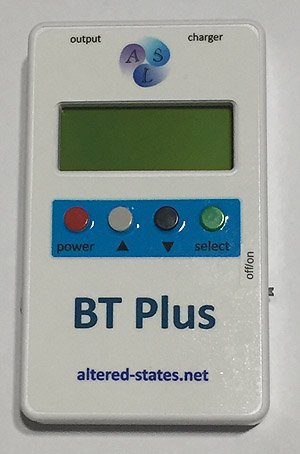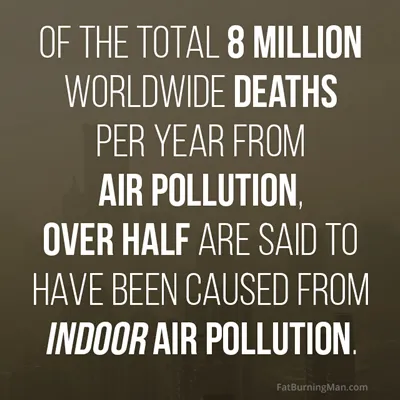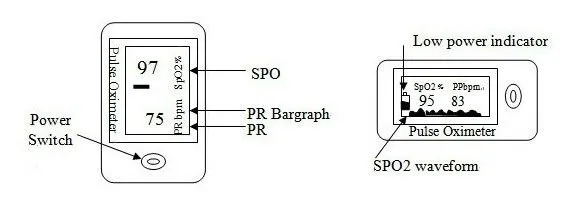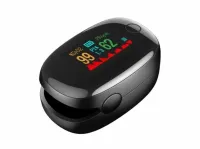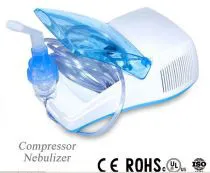Fingertip Oximeter x2
NZ$167.03 NZ$100.23
Approx USD$59.95
|
"What
are the normal oxygen levels in humans? A: Quick Answer Mayo Clinic defines the normal human oxygen level as 95 percent to 100 percent. Levels below 90 percent are considered low. Oxygen levels are usually measured with a pulse oximeter device attached to the finger; this device measures the amount of oxygen saturating the blood",,see below |
THE IMPORTANCE OF OXYGEN
The air we breathe contains oxygen. Oxygen is the spark
of life. Just as a fire can’t burn without oxygen our cells can’t produce
heat and energy without oxygen. Oxygen is extracted from the air we
breathe by the lungs. It passes into the blood vessels that surround
the lungs and is carried to all the cells of the body by the blood.
Most of the oxygen is carried by the red blood cells, though some of
it is carried by the water in the blood. A deficiency of water means
reduced oxygen delivery by the blood. So important is oxygen, that
even where optimum water, protein, vitamin and mineral intake exists,
ill health will still exist if there’s an oxygen
deficiency. Under-breathing is epidemic among adults.
"When the body has ample oxygen, it produces
enough energy to optimize metabolism and eliminate
accumulated toxic wastes in the tissues. Natural
immunity is achieved when the immune system is not
burdened with heavy "toxic buildup".
Detoxification occurs when oxygen is introduced
into the system." - Dr. Norman McVea |

The mechanics of breathing determine oxygen supply. Shallow chest breathing gives rise to oxygen deficiencies, as there are very few blood vessels surrounding the upper lobes of the lungs. Most of the blood vessels surround the lower lobes of the lung. Deep, abdominal breathing is the answer to optimum oxygen levels.
The blood is one of the most important substances in the body. The blood sustains the vital activities and it nourishes the body. Therefore, it keeps the function of the tissues, organs and circulation pathway in good order.

When the blood is cleansed, it has oxygen. When it is dirty, it has more waste or carbon dioxide. The condition of the blood will determine the function and the condition of the organs. The heart, the spleen, the lungs, the liver, the skin, the muscles, all depends on the blood.
Smoking though as we all know is an incredibly dangerous
habit that leads to emphysema, lung cancer, diminished
lung capacity and a lot of health problems that are
directly related to the poor air flow and dirty blood
that you will get from smoking. Give up Smoking |
Most people breathe shallowly. Tight clothing and a lifetime spent rushing, sitting hunched over desks doing paperwork, studying, working computers and getting stressed out produces the bad habits of shallow breathing. Babies don’t chest breathe. Neither do drunks. They’re both so relaxed they breathe easily and deeply and their tummies rise and fall to the rhythm of this breathing.
"...Insufficient oxygen
means insufficient biological energy that can result
in anything from
mild fatigue to life threatening disease. The link
between insufficient oxygen and disease has now
been firmly established. The more oxygen we have
in our
system, the more energy we produce." - Dr. W. Spencer Way: Journal of the American Association of Physicians |
For a majority of us, common sense dictates that oxygen is one of the most basic, and most important necessities for life. While we all need to eat, drink and sleep in order to survive, it is the simple act of breathing, filling our lungs, and our blood, with oxygen – that, which is most necessary for life.
However, oxygen does more than simply allow us to continue our existence.
Before we get to the benefits of oxygen , let’s look at the increasing problem of oxygen deficiency today and the symptoms of this problem.
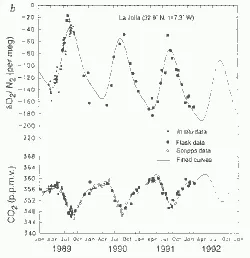 |
Since some have begun to measure in
1989, there has been a steady decline of free oxygen
in our atmosphere. And while this is nothing more than
expected, since every molecule of additional carbon
dioxide locks up two oxygen atoms, the free oxygen
decline is greater than the carbon dioxide lock-up. |
Decline Of
Atmospheric Oxygen Levels
Did you know that the evolution and development of all life on this planet
is directly proportionate to the increase of oxygen levels in the atmosphere?
Improper Diets
The majority of people eat food that is excessively
acidic. Their diet emphasizes red meat, coffee and even
soda pop. This causes the development of an acid (less-than-optimally
alkaline) constitution with an excess of positively-charged
hydrogen ions (H+) in the entire system. When excessive
numbers of hydrogen ions are in the tissues, they
combine with and use up oxygen. This reduces the amount of oxygen
available for the primary function of metabolism. Health
problems follow.
An oxygen deficiency plays an important part in cellular
contamination. Oxygen is a powerful detoxifier and when
its quantity is deficient, toxins begin to devastate
bodily functions and deplete the body of life-giving energy.
"Air pollution can also accelerate
aging. Procter & Gamble
recently released a report indicating that polluted
air can contain over 200 chemicals that age the skin.
And in a recent study on women’s health, air
pollution from city life added as much as 10 percent
to perceived aging." |
The fact is that in order to be suitable for life – any life; from plants to people, a planet’s atmosphere must have gradually higher densities of oxygen, dependent on the complexity of life supported. Thus, to sustain intelligent and complex life, such as us, an atmosphere requires high levels of oxygen.

Unfortunately, since ancient times, with the growing proliferation of technology in our society, and the decline of natural sources of oxygen such as trees, the increase of carbon dioxide in our atmosphere has been steadily matched by the decrease of oxygen levels.
This means that we aren’t getting enough oxygen – that most important of life’s requirements, from the air we breathe.
Possible reasons WHY we are NOT getting ENOUGH OXYGEN
|
So, what does this mean? What are the real medical concerns that we should bear in mind when considering the benefits of oxygen therapy?
"The large majority of
those infectious microbes that cause us so much
illness and pain are
ANAEROIC...a big word that means they live and
proliferate best in environments where there is
LITTLE OR NO
OXYGEN." - Ed McCabe: Oxygen Therapies: A New Way of Approaching Disease |
Symptoms Of
Oxygen Deficiency Disease
It is no coincidence that diseases such
as cancer have increased dramatically in the last one hundred-and-fifty
years.
Cancer, above all other diseases, has countless secondary causes. But, even for cancer, there is only one prime cause. Summarized in a few words, the prime cause of cancer is the replacement of the respiration of oxygen in normal body cells by a fermentation of sugar. All normal body cells meet their energy needs by respiration of oxygen, whereas cancer cells meet their energy needs in great part by fermentation. All normal body cells are thus obligate aerobes, whereas all cancer cells are partial anaerobes. From the standpoint of the physics and chemistry of life this difference between normal and cancer cells is so great that one can scarcely picture a greater difference. Oxygen gas, the donor of energy in plants and animals is dethroned in the cancer cells and replaced by an energy yielding reaction of the lowest living forms, namely, a fermentation of glucose. The key to the cancer problem is accordingly the energetics of life, which has been the field of work of the Dahlem institute since its initiation by the Rockefeller Foundation about 1930. In Dahlem the oxygen transferring and hydrogen transferring enzymes were discovered and chemically isolated. In Dahlem the fermentation of cancer cells was discovered decades ago; but only in recent years has is been demonstrated that cancer cells can actually grow in the body almost with only the energy of fermentation. Only today can one submit, with respect to cancer, all the experiments demanded by PASTEUR and KOCH as proof of the prime causes of a disease. If it is true that the replacement of oxygen-respiration by fermentation is the prime cause of cancer, then all cancer cells without exception must ferment, and no normal growing cell ought to exist that ferments in the during the cancer development the oxygen - respiration always falls, fermentation appears, and the highly differentiated cells are transformed to fermenting anaerobes, which have lost all their body functions and retain only the now useless property of growth Thus, when respiration disappears, life does not disappear, but the meaning of life disappears, and what remains are growing machines that destroy the body in which they grow. body. The
Prime Cause and Prevention of Cancer In Summary: The reason Food Therapies for cancer even exist today (beyond the fact that they work) is because someone once saw the connection between sugar and cancer. There are many food therapies, but not a single one allows many foods high in carbohydrates and not a single one allows sugars, BECAUSE SUGAR FEEDS CANCER. |
While oxygen deficiency is not the only cause of these ailments, it is still an influencing factor and treatment such as hyperbaric oxygen therapy can combat oxygen deficiency and reduce the risk of developing cancer and other major diseases.
Dr. Parris Kidd has stated that: "Oxygen plays a pivotal role in the functioning of the immune system; ie resistant to disease, bacteria, and viruses." Dr. Stephen Levine has also stated that "We can look at oxygen deficiency as the single greatest cause of all disease." Thus the development of a shortage of oxygen in the blood could very well be the starting point for the loss of the immune system and the beginning of the feared health problems such as cancer, leukemia, AIDS, candida, seizures, and nerve deterioration.
The renowned biochemist and Nobel Prize laureate, Dr.Otto Warburg, confirm this research. He stressed the importance of oxygen especially in its connection to cancer. Dr. Warburg summarized by saying, "The prime cause of cancer is the replacement of the normal oxygen respiration of body cells by an anaerobic cell respiration."
Dr. Freibott explains why oxygen and oxidation is so vital: "It is the lack of oxygen in proper amounts in the system that prevents oxidation and oxygenation, which energized the cells to biological regeneration. These Processes are the foundation of life and death.
"If the normal environment of the cell can be maintained, it will not lose its growth and reproduction potential. Sub-oxygen creates sub-oxidation."
An oxygen deficiency plays an important part in cellular contamination. Oxygen is a powerful detoxifier, and when its quantity is deficient, toxins begin to devastate body functions and delete the body of life-giving energy.
"Without oxygen, there can be no nourishment." Without nourishment, no heat and no energy can be created, and the body cannot purify itself. the unhindered development of this metabolic process results in a circumstance that we call sound health.
Detoxification and Cleansing Effects
Some known medical symptoms of oxygen deficiency are:
![]() Stomach
acid
Stomach
acid
![]() Bacterial,
viral and parasitic infection
Bacterial,
viral and parasitic infection
![]() Chronic
hostility
Chronic
hostility
![]() Circulatory
problems
Circulatory
problems
![]() Increased
proneness to common infections such as the flu
Increased
proneness to common infections such as the flu
![]() Fatigue
Fatigue
![]() Dizziness
Dizziness
![]() Bodily
weakness
Bodily
weakness
![]() Poor
digestion
Poor
digestion
![]() Irrational
behavior
Irrational
behavior
"Lack of oxygen
clearly plays a major role in causing cells to
become cancerous." - Dr. Harry
Goldblatt: Journal of Experimental Medicine |

Oxygen shortage,Yeast,infections
There is currently
a virtual epidemic of common yeast infections (Candida
Albicans). These take root with relative
ease in an oxygen-deprived body. In this environment, yeast
cells generate large quantities of acetaldehyde, causing
cellular damage. Acetaldehyde in the intestinal wall and
liver disrupt intestinal absorption and impair white and
red blood cell functions.
When yeast cells are deprived of oxygen, they become even
more resistant to immune defences, since they are capable
of anaerobic (no-oxygen) metabolism. A !ow oxygen
level is the major contributing factor to yeast susceptibility.
In addition, oxygen-starved tissues can generate the
following disorders: heart disease, strokes, diabetes and
peripheral arterial deficiency. An inadequate oxygen
supply will also contribute to memory loss, dizziness,
loss of balance, and depression in older persons with decreased
cerebral blood flow.
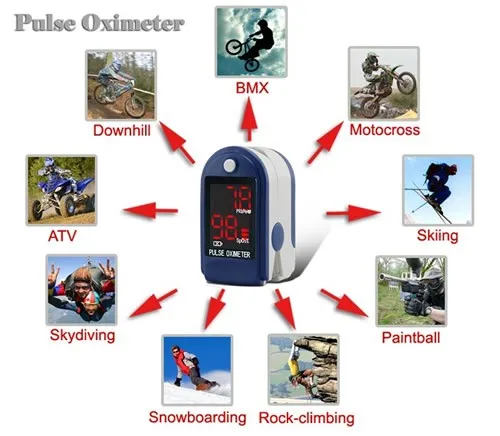
Finger Pulse Oximeter and Heart Rate Monitor
Oxygen levels are also vital in maintaining the balance of "friendly" bacteria over disease-causing bacteria, and other organisms in the body.
With one of the costs of modern life being the reduction of atmospheric oxygen levels through pollution in our air, oxygen can counteract the effects of this on your day-to-day life and provide the following benefits that you will notice:
![]() Heightened
concentration
Heightened
concentration
![]() Faster
thinking
Faster
thinking
![]() Sharper
sight
Sharper
sight
![]() More
retentive memory
More
retentive memory
![]() Stronger
heart
Stronger
heart
![]() Calm
mind and stable nervous system
Calm
mind and stable nervous system
![]() Faster
recovery time after physical exertion
Faster
recovery time after physical exertion
![]() Natural
remedy for headaches and hangovers
Natural
remedy for headaches and hangovers
![]() Reduced
muscle stiffness
Reduced
muscle stiffness
![]() Resistance
against chronic fatigue
Resistance
against chronic fatigue
![]() Stable
and regular sleeping patterns
Stable
and regular sleeping patterns
![]() Oxygen
provides 90% of our energy. With only
10% coming from food and water, this really drives
home the point of how important oxygen is in our day-to-day
lives.
Oxygen
provides 90% of our energy. With only
10% coming from food and water, this really drives
home the point of how important oxygen is in our day-to-day
lives.
Hypoxia, or a low blood oxygen level, if severe enough, is lethal. But milder forms of hypoxia can impair thinking, alter levels of consciousness, cause depression and stir up anxiety. Dr. Sunny Jha, a University of Southern California anesthesiologist, recently treated a man in his 60s who tested positive for "latest Virus". Since the disease is known to attack the lungs, Jha tested the man's oxygen levels, though the man said he didn't have any breathing problems or any other sign of low oxygen. But the reading came back at 88%, a concerning far cry from the healthy mid- or upper-90s Jha was expecting from someone who didn't show any outward breathing issues. It was a suspected case, Jha said, of what has been dubbed "silent hypoxics Source Dr. Richard Levitan that a simple, over the counter pulse oximeter will detect silent hypoxia. He argues that the simple device is reliable, simple to use — just attach it to a fingertip and turn the machine on — and "could provide an early warning system for the kinds of breathing problems associated with the latest viral pneumonia." -------------------------------------------------------------------------------------- At the age of 30, a young father noticed a low oxygen saturation while playing with the finger pulse oximeter of his child awaiting surgery. Since he was completely asymptomatic, he did not seek medical attention. At the age of 51, he was referred to the outpatient clinic of our pulmonary department after detection of a severe nocturnal “hypoxemia” The patient presented to our outpatient clinic with a significantly decreased peripheral O2 saturation of 76-82% while breathing ambient air, which was measured by different pulse oximeters source ------------------------------------------------------------------------- Testing for fever, high pulse rate, crackly breath sounds, and low oxygen levels could be key to helping GPs distinguish pneumonia from less serious infections, according to a large study published in the European Respiratory Journal. Source ------------------------------------------------------------------------------ RBCs clearly play a vital role in keeping your cells supplied with oxygen. But if you don’t have enough healthy red blood cells, your body doesn’t get enough oxygen — and you have anemia. Source |
Are you Getting Enough Oxygen ?
Oxygen plays an important role in the body acting as a guardian and protector against unfriendly bacteria and disease organisms. One of oxygen's major functions is disintegration. Rubble, garbage, toxins, refuse, debris, and anything useless are destroyed by oxygen and carried out of the system. Just as a clean house holds little interest to passing flies, likewise, likewise, an oxygen rich body is a difficult fortress to assail.
Now you can measure your Blood Oxygen Levels
Finger Oxymeter |
Do you feel tired all the time even though you get eight hours of sleep a night? Do your muscles throb every time you complete a workout even though you exercise every day; or do you experience occasional irritability for no apparent reason? If you answered yes to any of these questions, your problem may be a lack of adequate levels of oxygen in the blood.
Our bodies were designed to operate in an environment that existed hundreds of years ago -- when 30 to 40 percent of the air breathed was oxygen. Due in a large part to pollution, today, oxygen levels are about half that - 20 to 22 percent in most U.S. cities; as low as 15 percent in others.
According to Ed McCabe, author of "Flood Your Body With Oxygen," by living in an oxygen-deficient environment and not feeding our cells the proper oxygen and nutrients needed for cleaning out toxins and wastes, our body fluids and blood can become dirty and toxic. A lack of oxygen to our cells weakens our immune system, which may lead to viral infections, damaged cells, bacterial growths, inflamed joints, serious heart and circulatory problems, toxic buildup in blood and premature aging.
However, if the cells in our bodies are rich in oxygen, mutated cells may be less able to reproduce Other benefits of having adequate levels of oxygen in our systems: increased energy; the ability to maintain healthy cholesterol levels; enhanced brain function; a reduction in stress; the ability to overcome fatigue; and looking and feeling younger.
Now you can measure your Blood Oxygen Levels
Pulse oximetry
Pulse oximetry provides estimates of arterial oxyhemoglobin saturation (SaO2) by utilizing selected wavelengths of light to noninvasively determine the saturation of oxyhemoglobin (SpO2).
Pulse oximetry is a simple non-invasive method of monitoring the percentage of haemoglobin (Hb) which is saturated with oxygen The principle of pulse oximetry is based on the red and infrared light absorption characteristics of oxygenated and deoxygenated hemoglobin. Oxygenated hemoglobin absorbs more infrared light and allows more red light to pass through. Deoxygenated (or reduced) hemoglobin absorbs more red light and allows more infrared light to pass through. Red light is in the 600-750 nm wavelength light band. Infrared light is in the 850-1000 nm wavelength light band.
"Many scientists were
stunned recently when it was revealed that air
bubbles trapped in fossilized
amber had been analyzed and found to contain oxygen
levels of 38%. Yet today it is well known that
the average oxygen content of air is only about
19%.
In other words, since the early history of the
earth, it appears there has been an estimated 50%
drop in
the average oxygen content of air we breathe!" More
Here |
If your Blood Oxygen levels are low?
OZONATED WATER

Ozone is one of the most energetic and useful agents known to science. Its therapeutic action is due to oxygenation of the blood by the loose molecule (free radical) of oxygen in the O3 compound. It is carried to the various organs and tissues of the body and absorbed, thus oxidizing the waste products, and facilitating their elimination. In other words, ozone increases the metabolism without the expenditure of vital energy and special stress should be laid on the fact that ozone is a NATURAL remedy.>>>Dr. William Turska
Some scientific studies have found that increasing the amount of oxygen in the body alkalizes the it and creates an environment where disease cannot exist. A good way to get oxygen into the body is through water. Past tests have shown that consuming oxygenated water increased the level of the oxygen in the blood. When the blood supply has more oxygen diseases have trouble growing.

"Workers can become asphyxiated by exposure to atmospheres deficient of oxygen, that can lead to serious injury or loss of life. Oxygen is the only component of the air we breathe capable of supporting life. Air is composed of approximately 21% oxygen, 78% nitrogen and other trace components. Asphyxiation is the greatest hazard associated with nitrogen and other inert gases, such as argon and helium. However, the addition of any gas, except oxygen, to air reduces the oxygen concentration through displacement and dilution. Breathing as little as one or two breaths of air containing too little oxygen can have serious and immediate effects, including unconsciousness. Because there are no warning signs of reduced oxygen concentrations, these environments are extremely dangerous. Dangers of oxygen-deficient atmospheres
Effects of oxygen-deficient atmospheres
Effects of exposure to low oxygen concentrations can
include giddiness, mental
confusion, loss of judgment, loss of coordination, weakness,
nausea, fainting,
loss of consciousness and death.
The immediate effects of low oxygen environments are
due to our body’s oxy
gen transport system. Blood absorbs oxygen from the air
in our lungs to fuel
the cells in our bodies. The brain is the body organ
most sensitive to the lack
of oxygen. Within five seconds after inhaling only a
few breaths of oxygen free gas, there is a rapid drop in the oxygen concentration
of the blood. Mental
failure and coma follow a few seconds later. Symptoms
or warnings are generally absent, but even if present, the loss of mental
competence, weakness, loss
of coordination, or fainting prevents victims from helping
themselves or even
summoning help. Death follows in just two to four minutes.
Warning: Exposure to atmospheres containing less than
10% oxygen can
rapidly overcome a person and bring about unconsciousness
without
warning so they are incapable of helping themselves.
Lack of sufficient
oxygen can cause serious injury or death." source
"What is a dangerous Low blood oxygen level?
A: Quick Answer
Blood oxygen levels under 90 percent are considered low and warrant immediate medical attention, according to the Mayo Clinic. A dangerous blood oxygen level, also called hypoxemia, occurs when a lower-than-average level of oxygen is circulating from the blood to the cells and tissues of the body. Normal blood oxygen levels are within the 95 to 100 percent range. "
According to WebMD, symptoms of low blood oxygen levels include shortness of breath, fast heart rates, sweating, wheezing, mental confusion, coughing and changes in the color of the skin
What are the normal oxygen levels in humans?
A:
Quick Answer Mayo Clinic defines the normal human oxygen
level as 95 percent to 100 percent. Levels below 90 percent
are considered
low. Oxygen levels are usually measured with a pulse oximeter
device attached to the finger; this device measures the
amount of oxygen saturating the blood
Pulsed Oxymeter
Finger Pulse Oximeter and Heart Rate Monitor
Checking your bloods Oxygen levels after Activities
|
||||||||||||||||||||
Neither cancer
cells nor deadly viruses or bacteria can survive
in an oxygen-rich environment. People who have tried
drinking ordinary tap water and then tried oxygenated
water say that they feel a huge difference. Energy
levels, alertness and well being are all reported
to have been positively affected by drinking oxygenated
water.
|
||||||||||||||||||||
Oxygenate Your Blood High Quality Water Ozonator now with Negative Ion Generator
|
||||||||||||||||||||
Make Hydrogen Water for the Whole Family
Nebulise Ozonated water
Faster Delivery to the Blood
Explanation of Terms: Micro-clustered* water structure means smaller,
4 to 6 molecules per clusters. pH=negative logarithm of hydrogen-ion concentration and it shows whether a solution is acidic or alkaline.
ORP=Oxidation / Reduction Potential (Reduction Potential or Redox Potential) is a measure of tendency of chemical species to either acquire or donate electrons. Oxidative agents (like free radicals) need and acquire electrons. Reductive agents (antioxidants) have and donate electrons. ORP is measured in millivolts (mV) (mV). Positive values (+200 mV to +500 mV) represent oxidation
potential. rH2=Relative Hydrogen Score shows the true reduction potential, electron concentration / electron activity in a solution Molecular Bases of Hydrogen Effects for the scientifically minded "Effects of hydrogen on various diseases have been attributed to four major molecular mechanisms: a specific scavenging activity of? hydroxyl radical, a scavenging activity of peroxynitrite, alterations of gene expressions, and signal-modulating activities. The four mechanisms are not mutually exclusive and some of them may be causally associated with other mechanisms. The first molecular mechanism identified for hydrogen was its specific scavenging activity of hydroxyl radical [6]. Indeed, oxidative stress markers like 8-OHdG, 4-hydroxyl-2-nonenal (4-HNE), malondialdehyde (MDA), and thiobarbituric acid reactive substances (TBARSs) are decreased in all the examined patients and rodents. As hydrogen can easily dissipate in exhalation, hydrogen in drinking water is able to stay in human and rodent bodies in less than 10?min (unpublished data). Hydrogen, however, can bind to glycogen, and the dwell time of hydrogen is prolonged in rat liver after food intake [33]. A question still remains if mice and humans can take a sufficient amount of hydrogen that efficiently scavenges hydroxyl radicals that are continuously generated in normal and disease states. Another molecular mechanism of hydrogen effect is its peroxynitrite-() scavenging activity [6]. Although hydrogen cannot eliminate peroxynitrite as efficiently as hydroxyl radical in vitro [6], hydrogen can efficiently reduce nitric-oxide-(NO-) induced production of nitrotyrosine in rodents [34–38]. NO is a gaseous molecule that also exerts therapeutic effects including relaxation of blood vessels and inhibition of platelet aggregation [39]. NO, however, is also toxic at higher concentrations because NO leads to -mediated production of nitrotyrosine, which compromises protein functions. A part of hydrogen effects may thus be attributed to the reduced production of nitrotyrosine. Expression profiling of rat liver demonstrated that hydrogen has a minimal effect on expression levels of individual genes in normal rats [40]. Gene ontology analysis, however, revealed that oxidoreduction-related genes were unregulated. In disease models of rodents, expression of individual genes and proteins is analyzed. In many disease models, hydrogen down regulated pro inflammatory cytokines including tumor necrosis-factor-(TNF-)??, interleukin-(IL-) 1ß, IL-6, IL-12, interferon-(IFN-)??, and high mobility group box 1 (HMGB1) [4, 23, 24, 36, 41–59]. Hydrogen also down regulated nuclear factors including nuclear factor kappa B (NFB), JNK, and proliferation cell nuclear antigen (PCNA) [24, 44, 50, 55, 60–63]. Caspases were also down regulated [10, 55–57, 62, 64, 65]. Other interesting molecules studied to date include vascular endothelial growth factor (VEGF) [15]; MMP2 and MMP9 [34]; brain natriuretic peptide [48]; intercellular-adhesion-molecule-1 (ICAM-1) and myeloperoxidase [36]; B-cell lymphoma 2 (Bcl2) and Bcl2-associated X protein (Bax) [60]; MMP3 and MMP13 [38]; cyclooxygenase 2 (COX-2), neuronal nitric oxide synthase (nNOS), and connexins 30 and 43 [66]; ionized calcium binding adaptor molecule 1 (Iba1) [52]; fibroblast growth factor 21 (FGF21) [33]. Most molecules, however, are probably passengers that are secondarily changed by hydrogen administration, and some are potentially direct targets of hydrogen effects, which need to be identified in the future. Using rat RBL-2H3 mast cells, we demonstrated that hydrogen attenuates phosphorylation of FceRI-associated Lyn and its downstream signaling molecules [64]. As phosphorylation of Lyn is again regulated by the downstream signaling molecules and makes a loop of signal transduction pathways, we could not identify the exact target of hydrogen. Our study also demonstrated that hydrogen ameliorates an immediate-type allergic reaction not by radical-scavenging activity but by direct modulation of signaling pathway(s). In addition, using murine RAW264 macrophage cells, we demonstrated that hydrogen reduces LPS/IFN-induced NO production [67]. We found that hydrogen inhibits phosphorylation of ASK1 and its downstream signaling molecules, p38 MAP kinase, JNK, and IB??without affecting ROS production by NADPH oxidase. Both studies point to a notion that hydrogen is a gaseous signal modulator. More animal and cells models are expected to be explored to confirm that hydrogen exerts its beneficial effect as a signal modulator." Source 1: Ohta. Recent progress toward hydrogen medicine: potential of molecular hydrogen for preventive and therapeutic applications. Curr Pharm Des 17:2241-52 (2011). |
||||||||||||||||||||
Pulse oximetry is considered a safe procedure, but because of device limitations, false-negative results for hypoxemia(4) and/or false-positive results for normoxemia(15,16) or hyperoxemia(17,18) may lead to inappropriate treatment of the patient. sources |



